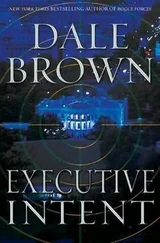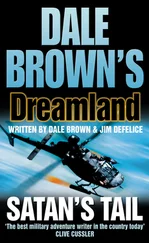Dale Brown - Sky Masters
Здесь есть возможность читать онлайн «Dale Brown - Sky Masters» весь текст электронной книги совершенно бесплатно (целиком полную версию без сокращений). В некоторых случаях можно слушать аудио, скачать через торрент в формате fb2 и присутствует краткое содержание. Жанр: Старинная литература, на английском языке. Описание произведения, (предисловие) а так же отзывы посетителей доступны на портале библиотеки ЛибКат.
- Название:Sky Masters
- Автор:
- Жанр:
- Год:неизвестен
- ISBN:нет данных
- Рейтинг книги:4 / 5. Голосов: 1
-
Избранное:Добавить в избранное
- Отзывы:
-
Ваша оценка:
- 80
- 1
- 2
- 3
- 4
- 5
Sky Masters: краткое содержание, описание и аннотация
Предлагаем к чтению аннотацию, описание, краткое содержание или предисловие (зависит от того, что написал сам автор книги «Sky Masters»). Если вы не нашли необходимую информацию о книге — напишите в комментариях, мы постараемся отыскать её.
Sky Masters — читать онлайн бесплатно полную книгу (весь текст) целиком
Ниже представлен текст книги, разбитый по страницам. Система сохранения места последней прочитанной страницы, позволяет с удобством читать онлайн бесплатно книгу «Sky Masters», без необходимости каждый раз заново искать на чём Вы остановились. Поставьте закладку, и сможете в любой момент перейти на страницу, на которой закончили чтение.
Интервал:
Закладка:
“Roger, ” Tamalko replied. Just as he rolled out on his new heading toward the second Chinese vessel, he saw a huge cloud of fire burst directly abeam the radar cursor in his HUD. The ship was clearly illuminated for a second or two, and Tamalko could not believe the size of the ship-it was as big as an aircraft carrier, he thought, and as tall as a skyscraper. It was easily the biggest ship he had ever seen so close to Palawan. Only a search radar still emanating from this one-it seemed unaware of his presence. Well, perhaps not. Just as Tamalko considered the lack of threat signals from the big vessel, he saw a streak of fire arch skyward from the rear of the Chinese ship. It trailed a line of fiery exhaust that could be seen for dozens of miles, and it flew fairly slowly, picking up speed only several seconds after launch. The big missile continued south and made no attempt to turn east toward him. That was odd, Tamalko thought. “Coming within two miles, ” Pilas said. “Two miles… now. Just then, the heads-up display circular firing cue began its clockwise sweep, like a racing timer-when the sweep circle passed the three o’clock position on the HUD, he could open fire. Tamalko checked his switches visually instead of by feel, double-checked his gun status-still not jammed after 340 rounds fired off’ which was above-average for the M61A1 cannon-and by the time he faced forward to line up on target, he was within a mile and a half. Pipper in the center of the radar diamond, a good ARM 260 indication-and Tamalko let loose, maintaining short trigger pulls, feeling the reassuring buzz of the gun when it fired, keeping the pipper lined up on the radar target diamond. There was no return fire from the big Chinese ship. The cannon jammed with thirty rounds remaining, but every one of the others had been placed neatly into the ship’s midsection. Tamalko clicked the gun to “Safe” and banked up on his left wing, keeping a low, thin profile to the ship as he passed overhead. He caught glimpses of flickering lights on deck as he screamed over the ship at Mach one, but whether they were secondary explosions or reflections of light, he couldn’t tell. Tamalko banked left, heading south, keeping his engines out of afterburner to avoid attracting any heat-seeking missiles or optically guided guns. The threat radars from the big destroyer were gone. Maybe he did hit something vital! And then it happened. For a millisecond Tamalko’s eyes registered the brightest flash of light he’d ever seen. It was just on the horizon, almost directly off the nose. And just as quickly the light enveloped and blinded him. His eyes became two red-hot spheres of excruciating pain, burned, it seemed, by molten lava. Behind him, Pilas was screaming and Tamalko realized he, too, was screaming. The roar of the F-4E’s big engines was gone, which meant they had been hit by something big enough to cause a double flameout-a big missile must have exploded right in front of them, blinding them and shelling out the engines. The control stick was beginning to tighten up as hydraulic power bled away-soon it would freeze up completely. He hauled back on the stick to try to start a zoom maneuver and trade some of their Mach one speed for altitude-if they ejected at Mach one, the windblast would tear them apart. He couldn’t tell if they were gaining altitude… there wasn’t time to think. “Eject! Eject!” Tamalko screamed, then crossed his wrists in front of him, grasped the ejection ring between his legs, and pulled. The canopy ripped off in the slipstream before the crewmen’s heads crashed through it, and both he and Pilas were rocketed free and clear of the stricken plane. Tamalko’s body was flying forward at almost seven hundred feet per second. The wall of compressed, superheated air rushing toward him from the explosion of the single RK-55 nuclear warhead of the Fei Lung-9 missile was traveling at two thousand feet per second. When the two met, Tamalko, Pilas, and the crippled F-4E Phantom II fighter were mercilessly crushed into powder, then vaporized by the five.thousand-degree heat of the fringes of the fireball that had already destroyed the Philippine corvette Quezon and its three antiship helicopters. FIRST AIR WING COMMAND AND CONTROL OPERATIONS CENTER CHEYENNE MOUNTAIN AFB, COLORADO SAME TIME A young Air Force staff sergeant, Amy Hector, was on the FOREST GREEN console at the U.S. Air Force Space Command’s Command and Control Operations Center, deep within the Cheyenne Mountain NORAD complex, when her detection board went crazy. “Red Collar, Red Collar, ” Staff Sergeant Hector called on the center-wide intercom, pressing the “Call” button on her console so that her warning message would override all the other transmissions in the Operations Center. The words “Red Collar” would also ensure immediate attention by all-the effect those simple code-words had was akin to her screaming at the top of her lungs: “FOREST GREEN with an event-detection warning, all stations stand by.. .” Hector waited a few more ‘heartbeats, then quickly began reading her detection figures aloud, knowing ~7~~~, :r’~ ~~//~ ~~i~~~Ur~~j~/hJPJf~~rP >cr~zzibJizig to their ~~ats azid chcc&zg ~~ “FOREST GREEN shows three units with amphtu~e pu’Ise threshold readings. System reports confirmation of readouts, repeat, system reports readout confirmation, event confidence is high.” Technicians at Cheyenne Mountain seldom used words like “nuclear detonation” or “explosion”-these were collectively called “events” and “readouts.” emotional detachment prevalent inside the Mountain, as if they could somehow block the horrors they saw by naming them something harmless. It was a relatively low-tech device that issued a warning on that Wednesday afternoon, a device that had gone all but unused for years. In an effort to increase the number of nuclear detection devices in orbit without increasing the actual number of satellites, in the late 1 970s and early 1 980s a secret program code-named FOREST GREEN was implemented. NAVSTAR Global Positioning System navigation satellites were fitted with electromagnetic pulse sensors and devices called (quite appropriately for nuclear detonation detection) Bhangmeters, which were sensitive optical flash detectors that could determine the explosive yield of a nuclear explosion by the brightness of the flash. Unlike AMWS, which were used only on specific (albeit very wide) areas of the Earth, FOREST GREEN had global coverage because the eighteen-satellite NAVSTAR constellation had at least three satellites looking at every piece of the Earth at every moment. A nuclear explosion has a definite pattern of two pulses-the first less intense than the second-caused first by the detonation of the triggering device, followed exactly one-third of a second later by the main explosion; this was the reason Bhangmeters were mounted in pairs, with one more sensitive than the other. The EMP detectors on the three FOREST GREEN satellites also registered the disruption of the ionosphere before communication between the satellites and their receivers on Earth were abruptly cut off. The senior controller in the Operations Center, an Air Force colonel named Randolph, immediately put the staff sergeant’s console display up on the “big board, ” a rectangle of six 2-by-3foot screens in the front of the Operations Center. The display was relatively uninformative at this point-three lines out of eighteen on the display were flashing, with a string of numbers showing the system readings and the threshold levels preprogrammed into the system. “All stations, this is Randolph. I confirm a FOREST GREEN event detection and classification, I need a status check and report in thirty seconds, all stations stand by.” The problem with the FOREST GREEN sensors was that they were not highly directional-the sensors could accurately record a nuclear detonation but not precisely pinpoint the explosion’s location; when the Bhangmeters were installed on older Vela nuclear-detection satellites, the device’s telescopic eye could pinpoint the location of the detonation, but on NAVSTAR satellites the sensors were relegated to area reports only. In a few moments Amy Hector had replaced the cryptic lines of data with a graphic pictorial of the information: a chart of the Earth that was within line-of-sight reach of the three NAVSTAR satellites that had suddenly gone off the air. Somewhere within the three overlapping shaded spheres, the first aboveground nuclear device in thirty years had detonated. Unfortunately, the display showed the explosion could have occurred anywhere from Hawaii to Thailand and from Japan to Australia. “I need better information than that, ” Colonel Randolph said. “Find out why no DSP systems issued an alert.” DSP was a constellation of satellites so sensitive that they could detect brush fires, structure fires, or even high-performance aircraft using afterburners-all from twenty-two thousand miles in space. “Sir, this is Staff Sergeant Hector on FOREST GREEN, ” Hector interjected. “I think I can come up with a rough triangulation.”
Читать дальшеИнтервал:
Закладка:
Похожие книги на «Sky Masters»
Представляем Вашему вниманию похожие книги на «Sky Masters» списком для выбора. Мы отобрали схожую по названию и смыслу литературу в надежде предоставить читателям больше вариантов отыскать новые, интересные, ещё непрочитанные произведения.
Обсуждение, отзывы о книге «Sky Masters» и просто собственные мнения читателей. Оставьте ваши комментарии, напишите, что Вы думаете о произведении, его смысле или главных героях. Укажите что конкретно понравилось, а что нет, и почему Вы так считаете.












